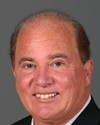Based on very preliminary research, because some cohorts have only been back in what I would call non-operational duty for a short period of time, there's no difference in the attrition rates between those who have served in Afghanistan and those who haven't when those samples are matched on a variety of characteristics.
That said, the operation is ongoing. Potentially still an attractor for some people.
Here's an odd statistic for you. You can make of it what you will. We were looking at some of the strengths in various army occupations. I understand the chief of land staff raised this as an issue at SCONSAD earlier this spring, that he was having difficulties in some occupations. As you know, if you look at the casualty lists for Afghanistan, the hardest-hit occupations have been combat engineers and infantrymen. Yet the manning level for those occupations is over 100%, with hundreds of people in the training pipeline waiting to come in. You explain it.
I would speculate that there is some interest in the adventure that represents. Certainly our American colleagues have expressed similar concerns, that once they down tools, if you like, operationally for a sustained period of time, they may have more difficulty attracting some people into the forces.




